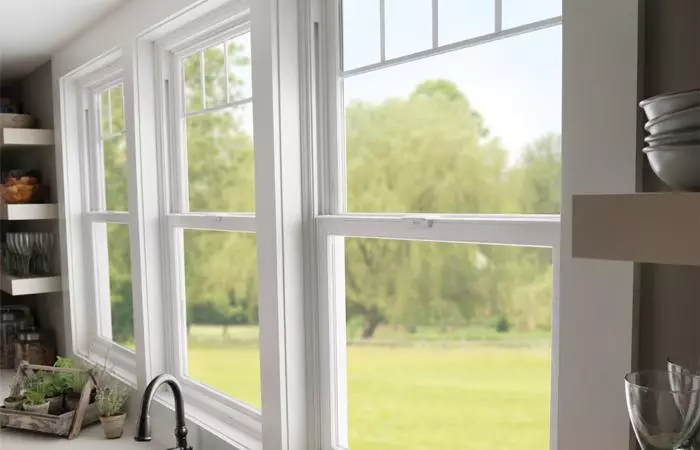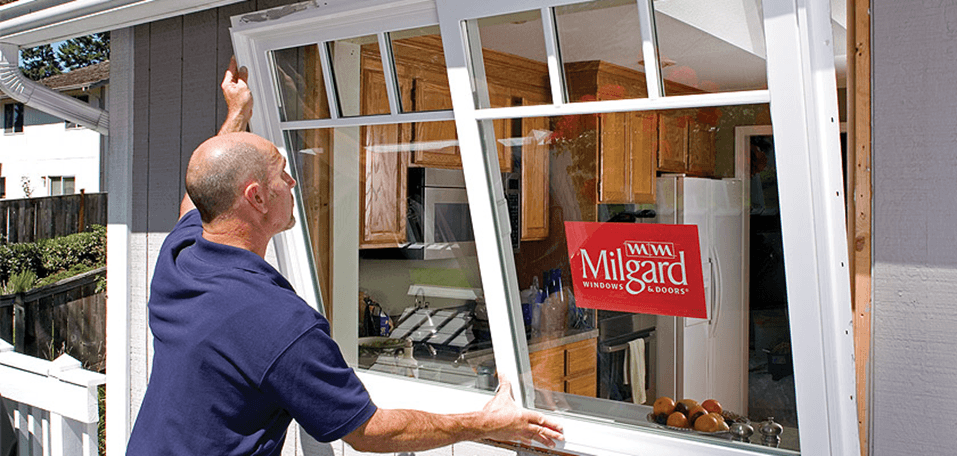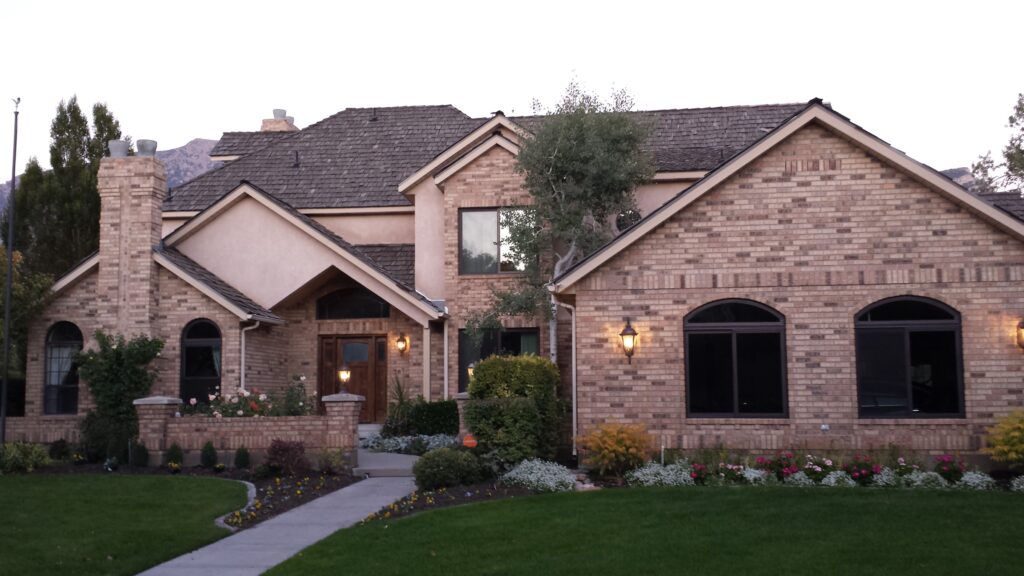Are you looking to upgrade your windows without the hassle of a complete renovation? Retrofit windows might be the solution for you. Understanding how retrofit windows work can help you make an informed decision. In this article, we’ll explain what retrofit windows are, their benefits, and when to choose them.

A title
Image Box text
Window Professional
Landon Hancock
May 16th, 2024 • 10 min read
12 112
Shares Views

Table of Contents
Quick Answer: How Do Retrofit Windows Work?
Retrofit windows are custom-made to fit the exact size of your existing window openings, allowing for a quick and minimally invasive installation. The old windows are removed, leaving the existing frames intact, and the new retrofit windows are securely installed and sealed in place. This improves insulation and energy efficiency, reducing drafts and saving on energy bills without the need for major renovations.
1. What Are Retrofit Windows?
Retrofit windows, also known as replacement windows, are designed to fit into existing window openings. Unlike new construction windows, which are installed during a major renovation or new build, retrofit windows are a simpler option for upgrading your home.
Retrofit windows are custom-built to fit the exact size of your current window frame. This means you don’t have to remove any exterior materials like siding or stucco. Instead, the old window is taken out, and the new one is put in its place, making the process quick and efficient.
By choosing retrofit windows, you can enjoy the benefits of new windows without the mess and cost of a full-scale renovation. They’re a great option for homeowners who want to improve their home’s energy efficiency and appearance with minimal disruption.
2. Types of Retrofit Windows
Retrofit windows come in different types to suit various needs and preferences. Here are a few common options:
Insert Windows
Insert windows, also known as pocket windows, are a great option for upgrading your windows without the need for a complete frame replacement. These windows fit directly into your existing window frame, making the installation process quick and straightforward. They offer a practical solution for improving your home’s energy efficiency and appearance.
Exterior Storm Windows
Exterior storm windows are installed outside your existing windows. They provide an extra layer of protection against weather and help improve insulation. This type is easy to install and can be removed if needed.
Interior Window Panels (Inside Storm Windows)
Interior window panels are placed inside your current windows. They offer similar benefits to exterior storm windows but are more convenient for homes with limited exterior access. They are also easy to install and remove.
Cellular Blinds (Interior Insulating Blinds)
Cellular blinds, also known as honeycomb blinds, are window coverings that help insulate your home. They trap air in their cells, reducing heat loss in the winter and keeping your home cooler in the summer. These blinds are a good option if you’re looking for a simple way to improve energy efficiency.

3. Pros and Cons of Retrofit Windows
Retrofit windows have their own set of advantages and disadvantages. Here’s what you need to know:
Pros
- Cost-effective: Retrofit windows are generally less expensive than new construction windows because they don’t require extensive work on your home’s exterior.
- Easier installation process: Since retrofit windows fit into your existing window frames, the installation process is quicker and less messy.
- Minimal disruption: You can upgrade your windows without having to deal with major renovations or construction work.
Cons
- Potential limitations in energy efficiency: While retrofit windows can improve energy efficiency, they might not perform as well as new construction windows designed specifically for your home.
- Possible aesthetic compromises: Depending on your home’s architecture, retrofit windows might not always blend perfectly with the existing style. However, many options are available to match most designs.
4. Energy Efficiency of Retrofit Windows
One of the main reasons homeowners choose retrofit windows is to improve energy efficiency. By replacing old, drafty windows with new, well-insulated ones, you can reduce energy loss and save on heating and cooling costs.
Retrofit windows are designed to fit snugly into your existing window openings, which helps to seal gaps and prevent drafts. Many retrofit windows come with features like double or triple glazing, low-E coatings, and gas fills between the panes, all of which contribute to better insulation.
While retrofit windows may not always be as energy-efficient as new construction windows, they still offer significant improvements over older windows. By choosing high-quality retrofit windows, you can enjoy better energy efficiency and a more comfortable home.
5. When to Choose Retrofit Windows
Retrofit windows are a great option in many situations. Here are some scenarios where they might be the best choice:
- Upgrading old windows: If your current windows are old and inefficient, retrofit windows can provide a quick and effective upgrade.
- Minimizing disruption: If you want to improve your windows without the hassle of major construction, retrofit windows are a good choice. They can be installed with minimal disruption to your home’s exterior and interior.
- Cost-effective improvements: Retrofit windows are generally less expensive than new construction windows. If you’re looking for a budget-friendly way to improve your home’s energy efficiency and appearance, retrofit windows are a smart option.
When deciding between retrofit and new construction windows, consider your specific needs and budget. Retrofit windows offer many benefits and can be a great solution for many homeowners.
6. Advantages and Disadvantages of New Construction Windows
Advantages
- Customizable: New construction windows are custom-built for your home. You can choose the exact size, style, and features that fit your needs.
- Higher energy efficiency: These windows are designed to be highly energy-efficient. They often come with advanced insulation features that can significantly reduce your energy bills.
- Long-term durability: Since new construction windows are installed during a complete renovation, they tend to be more durable and long-lasting.
Disadvantages
- Higher cost: New construction windows are more expensive than retrofit windows. The cost includes the price of the windows themselves and the labor required for a more complex installation.
- More invasive installation: Installing new construction windows involves removing parts of your home’s exterior, which can be disruptive and time-consuming. This process might require additional work, such as repairing or replacing siding or stucco.

7. Comparison: Retrofit vs. New Construction Windows
Choosing between retrofit and new construction windows depends on your specific situation. Here’s a quick comparison to help you decide:
Retrofit Windows
- Cost: Less expensive
- Installation: Quick and easy, with minimal disruption
- Energy Efficiency: Good, but may not match the performance of new construction windows
- Aesthetics: Can blend well with existing windows, but may not be a perfect match for all styles
New Construction Windows
- Cost: More expensive
- Installation: More invasive and time-consuming
- Energy Efficiency: Generally higher due to custom fitting and advanced insulation features
- Aesthetics: Fully customizable to match your home’s design
When deciding, consider your budget, the condition of your current windows, and how much disruption you can handle. Both options have their benefits, and choosing the right one can greatly improve your home’s comfort and efficiency.
Conclusion
In conclusion, both retrofit and new construction windows have their unique benefits and drawbacks. Retrofit windows are a cost-effective and less invasive option for upgrading your home’s energy efficiency and appearance. They fit into your existing window openings, making installation quick and straightforward. On the other hand, new construction windows offer higher energy efficiency and customization options, but they come with a higher cost and a more involved installation process.
Frequently Asked Questions
What are the disadvantages of retrofit windows? Retrofit windows, while convenient and cost-effective, have a few disadvantages:
- Potential limitations in energy efficiency: They might not be as energy-efficient as new construction windows designed specifically for your home.
- Aesthetic compromises: Depending on your home’s architecture, retrofit windows might not always blend perfectly with the existing style. However, many options are available to match most designs.
- Limited structural changes: Retrofit windows do not allow for significant changes to the window size or shape, which might be necessary in some cases.
What is the process of retrofit windows? The process of installing retrofit windows involves several steps:
- Measurement: Accurate measurements of the existing window openings are taken to ensure the new windows fit perfectly.
- Removal: The old windows are carefully removed, leaving the existing window frame intact.
- Installation: The new retrofit windows are installed into the existing frames. They are secured and sealed to ensure a tight fit and prevent drafts.
- Finishing touches: Any necessary adjustments are made, and the windows are tested to ensure proper operation. The area around the windows is cleaned up, and any exterior or interior trim is reinstalled or repaired as needed.
How does retrofitting windows work? Retrofitting windows involves replacing old windows with new ones that fit into the existing window openings. Here’s how it works:
- Custom fit: Retrofit windows are custom-made to match the dimensions of your current windows.
- Minimal disruption: The installation process does not require removing exterior materials like siding or stucco. The old window is simply taken out, and the new window is installed in its place.
- Improved performance: New retrofit windows provide better insulation and energy efficiency compared to old windows, helping to reduce energy costs and improve comfort.
What is the difference between a retrofit window and a new window? The main differences between retrofit windows and new construction windows are:
- Installation process: Retrofit windows are installed into existing window openings without disturbing the surrounding materials. New construction windows are installed during a major renovation or new build, requiring the removal of exterior materials to fit the new window frame.
- Cost: Retrofit windows are generally less expensive due to the simpler installation process. New construction windows involve more labor and material costs.
- Customization: New construction windows can be fully customized to fit specific needs and designs, while retrofit windows are made to fit the existing openings.
- Energy efficiency: While both types can be energy-efficient, new construction windows often offer higher efficiency due to the ability to incorporate advanced insulation features and custom fits.